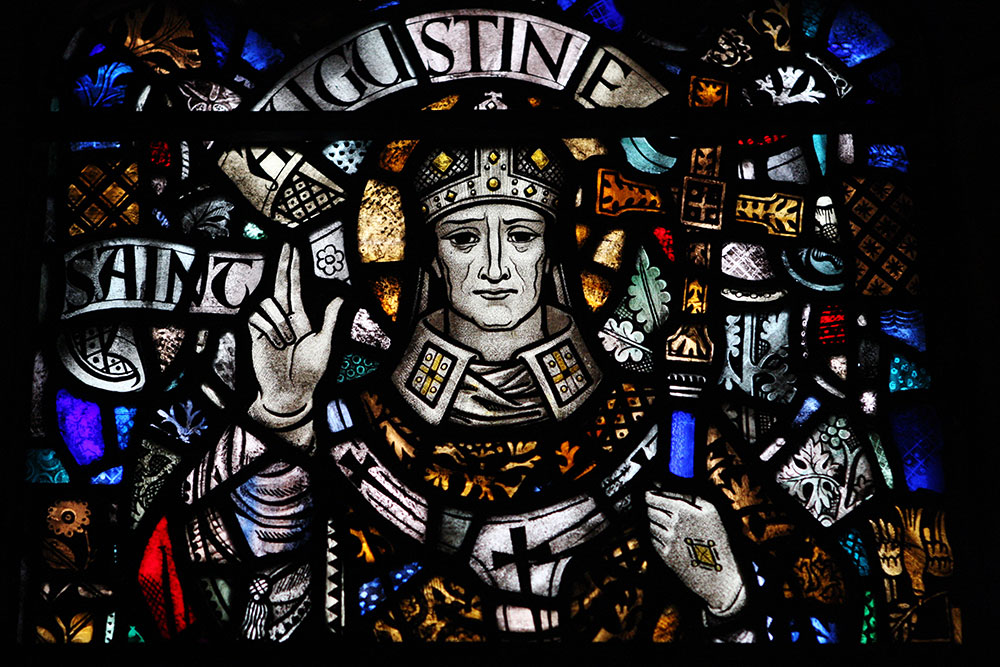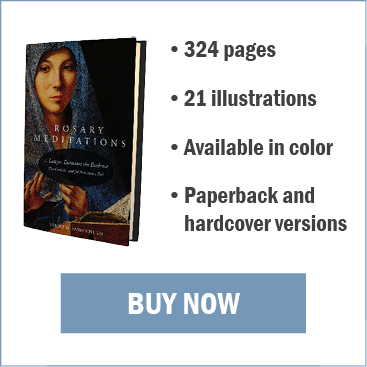
The Church Fathers
About AD 100, the last of the apostles, John, died in Patmos, Greece. With the passing of the twelve men called by Jesus to build his church—as well as Paul, who been killed about thirty-five years earlier—the responsibility for sharing the teachings of Jesus and defining his universal church fell to Christian bishops and theologians known today as the Church Fathers.
How did these “fathers” continue the apostolic tradition? None of them had ever met Jesus and only a few had known the apostles. So how did they manage to unite scattered and persecuted churches throughout the ancient world and set the foundation for the Church we have today?
To understand how, we must go back to John’s final written words. In the last line of his gospel (21:25), John says, “But there are also many other things which Jesus did; were every one of them to be written, I suppose that the world itself could not contain the books that would be written.”
That is to say, the gospel writers did not report all that Jesus said and did and, most importantly, taught the apostles. We do not know all of what Jesus shared with them during their two years together ministering throughout Galilee and Judea. Nor do we know exactly what Jesus’ final lessons were during the forty days he spent with the apostles between the Resurrection and the Ascension.
However, the apostles did know. They knew Jesus’ wishes for making disciples of all nations as well as the traditions upon which the Church should be built. After Jesus’ death, they “taught” his Church. They taught from the Old Testament and from the life and teachings of Jesus, as transmitted by him both before and after his Resurrection. By AD 50, Paul would refer to these teachings regarding Jesus as “the traditions which you were taught by us, either by word of mouth or by letter.”
Teaching tradition has always been the fundamental core of Christianity. After the deaths of the apostles, the Old Testament traditions and teachings of Jesus would rest firmly with the office of the Bishop of Rome. From St. Linus, who took over the mantle upon the death of Peter, to Pope Francis, the pope has been charged with keeping the doctrines and practices of the Church in line with the teachings of Jesus.
During the early years of Christianity, theologians and bishops from around the ancient world, including Constantinople, Alexandria, and Hippo, under the acknowledged headship of the Bishop of Rome, helped to form the Christological and trinitarian doctrine of the Church, define the roles of bishops, and formalize the practices and traditions for a fledgling religion that 2,000 years later would be the largest in the world.
The Church Fathers
The Church Fathers can be defined in several ways. Some historians group them into Ante-Nicene Fathers (before the Council of Nicaea in AD 325) and Nicene and Post-Nicene Fathers. Some denote them as Apostolic Fathers, those living within a few generations of the apostles. Still others separate them as Greek Fathers and Latin Fathers.
Typically, the term Church Fathers refers to those clergymen and theologians from the period commencing with the deaths of Peter and Paul in AD 64–65 and ending with the death of Gregory the Great in 604. It is through a study of their writings (called patristics) that we can see how the Church developed over the first few hundred years of its history. While this space is not large enough to name all those considered Church Fathers, here are some of the more prominent ones:
Clement of Rome (d. 100) – Ordained as a deacon by the apostle Peter. Bishop of Rome (Pope) from 92 to 100. Considered the first Apostolic Father. The First Epistle of Clement is important for two reasons: (1) it references the letters of St. Paul, thus proving Paul’s letters were known in Rome and Corinth; and (2) it references a dispute and asks Clement, as pope, to resolve it, thus showing the primacy of the Bishop of Rome.
Ignatius of Antioch (c. 35– c. 110) – A disciple of the Apostle John. His letters, which helped to form early Christian beliefs and practices, addressed the sacraments, the role of bishops, and the Church’s relationship to Jesus.
Polycarp of Smyrna (c. 69–c. 155) – A disciple of the Apostle John. Ordained Bishop of Smyrna by John. His only surviving epistle, Letter to the Philippians, emphasizes Polycarp’s closeness to John regarding Church traditions, as evidenced by his position in the Quartodeciman Controversy over which day to celebrate Passover.
Justin Martyr (c. 165) – A Christian apologist regarded as the foremost authority on the Logos (Jesus as the second person in the Trinity). His First Apology defends the Christian life and argues against persecution for being Christian. He also wrote extensively on early Christian practices such as customs and observances.
Irenaeus of Lyons (130–c. 202) – A disciple of Polycarp. His writings were formative in the early development of Christian theology. His insisted that every local church must be in communion with Rome. He described the Virgin Mary as the new Eve. Against Heresies, his best-known work, argues against Gnosticism. Irenaeus proposed that the gospels of Matthew, Mark, Luke, and John be accepted as canonical.
Athanasius of Alexandria (c. 296–373) – Bishop of Alexandria who, as an assistant during the Council of Nicaea, helped to create the Nicene Creed and then defended it against attacks by Arians. His conflicts with Arius and Roman emperors, who would exile him five times, marked his 45-year episcopate. He was one of the primary defenders of the divinity of Jesus against the Arian heresy.
Gregory of Nazianzus (c. 329–390) – Archbishop of Constantinople who is remembered as the “Trinitarian Theologian” for his impact on shaping Trinitarian theology among Greek- and Latin-speaking theologians.
Basil of Caesarea (c. 330–379) – Bishop of Caesarea and opponent of Arianism who supported the Nicene Creed. Basil helped to establish guidelines for monastic life. His On the Holy Spirit referenced scripture and early Christian traditions to prove the divinity of the Hoy Spirit.
Jerome of Stridonium (347–430) – A priest and theologian, Jerome translated the Bible from Greek and Hebrew into Latin. His translation is known as the Vulgate.
Ambrose of Milan (c. 350–428) – Bishop of Milan and one of the most influential figures of the fourth century. Known for his strong opposition to Arianism. Offered a new perspective on the theory of atonement and is credited with promoting the antiphonal chant.
Augustine of Hippo (354–430) – Bishop of Hippo who defended the concepts of original sin, free will, and just war. His great work, City of God, defended Christianity and helped to develop the concept of the Church as a spiritual city of God.
John Chrysostom (c. 349–407) – Archbishop of Constantinople known for his denunciation of abuse of authority by ecclesiastical and political leaders. One of the Three Holy Hierarchs of Eastern Christianity along with Basil the Great (of Caesarea) and Gregory of Nazianzus.
Gregory the Great (c. 540–604) – Pope from 590 until his death. The first pope from a monastic background, Gregory who had a major influence on the medieval Church. He introduced plain-chant (today called Gregorian chant) and made changes to the Mass, including moving the Pater Noster (Our Father) before the eucharistic celebration.
The early Church Fathers dealt with several heresies that challenged the foundation of the Church, such as Arianism and Montanism, but ultimately crystallized the teachings of Jesus and the apostles into concrete practices and beliefs. Even though differences would exist between the Eastern and Western Churches, and the Church would splinter during the Reformation, the works and writings of the Church Fathers can still be seen in all branches of Christianity.
